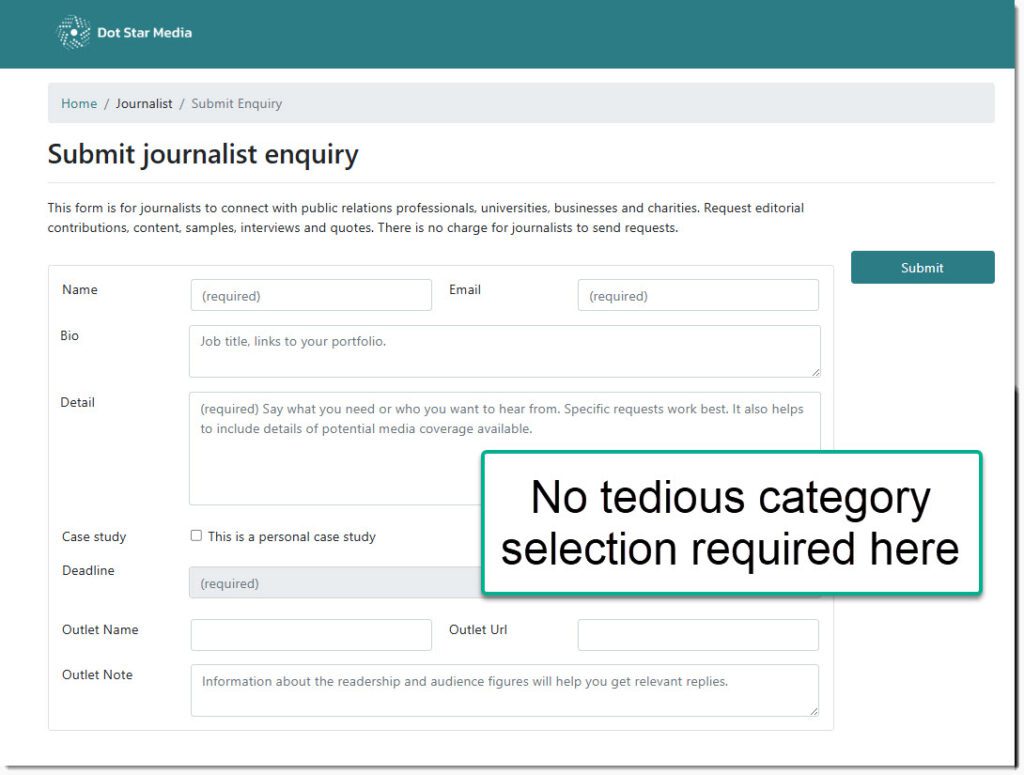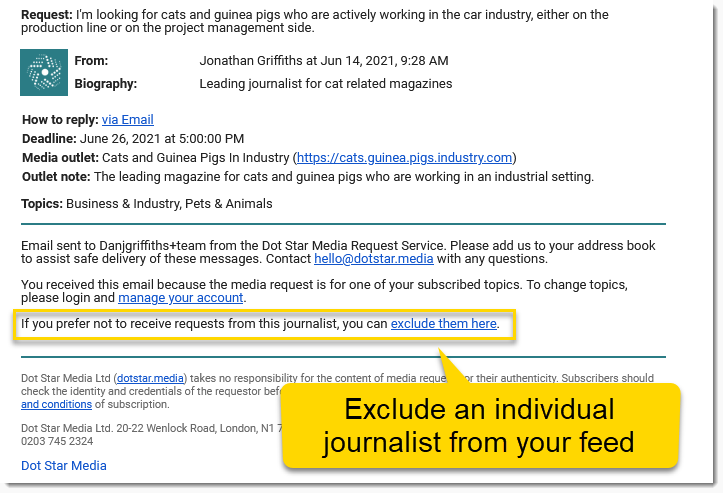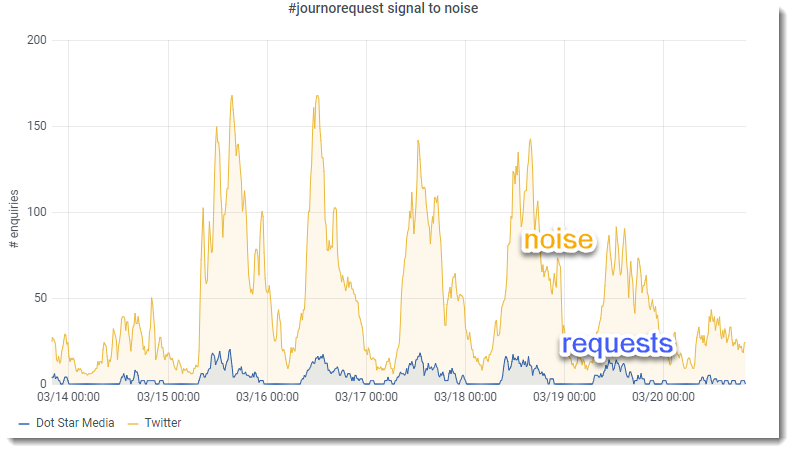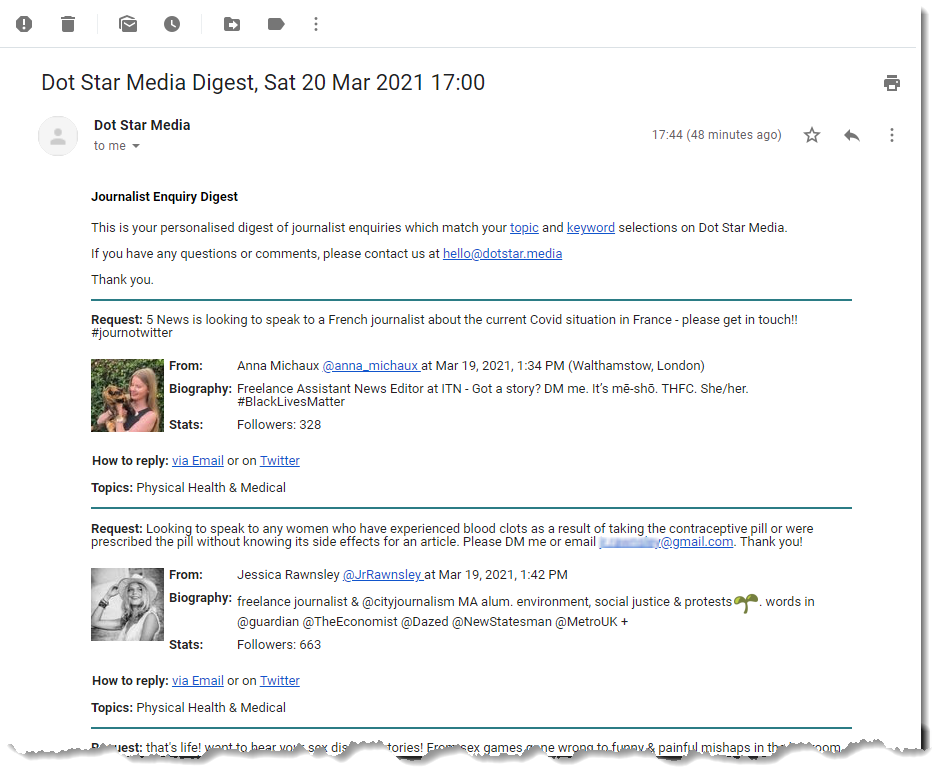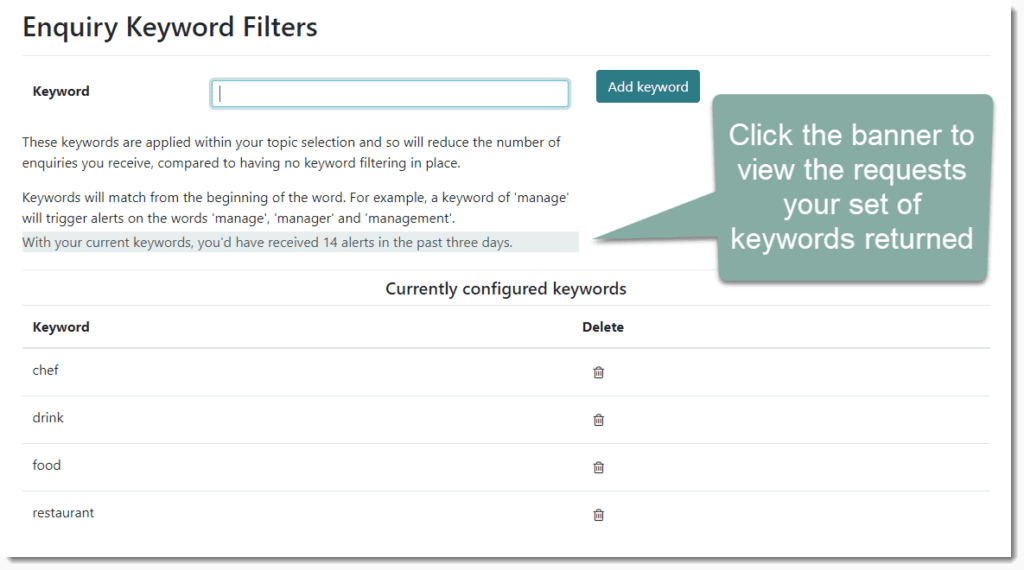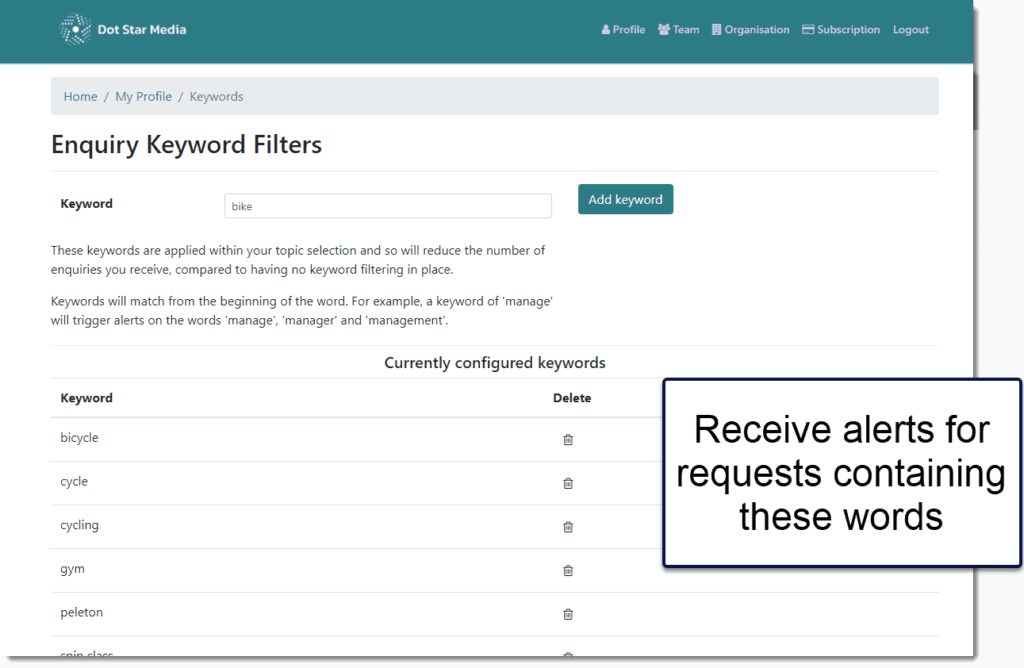Every journalist that sends a journalist enquiry has their own style and technique. For public relations professionals the ongoing task of identifying the best media opportunities from hundreds of individual journalist request emails every week can be hard work. It is certainly time-consuming.
For PRs: At-a-glance journalist request headlines
To tackle this issue we’ve made an update to the Dot Star Media journalist request service. We now show short summaries that capture the essence of the full journalist request body-text in the email alert subject line.
This provides an ‘at-a-glance’ summary making it super-easy for public relations professionals to scan through the journalist request alert emails selecting the best opportunities.
In a Gmail web-browser inbox, the new email subject lines summaries look like this:

And in Microsoft Outlook’s desktop email client, the new email subject lines look like this

For Journalists: a simple, quick, journalist request submit form
We’ve streamlined the process of submitting a media request in a couple of ways:
- Journalists submitting requests don’t need to spend time considering and selecting topics. There is no need for the journalist to devote mental energy in thinking about how their enquiry fits into our subject areas. Categorisation is handled by us.
- Journalists are no longer asked to summarise their request at the point of submission. This is done automatically.
The shortened journalist enquiry form looks like this:
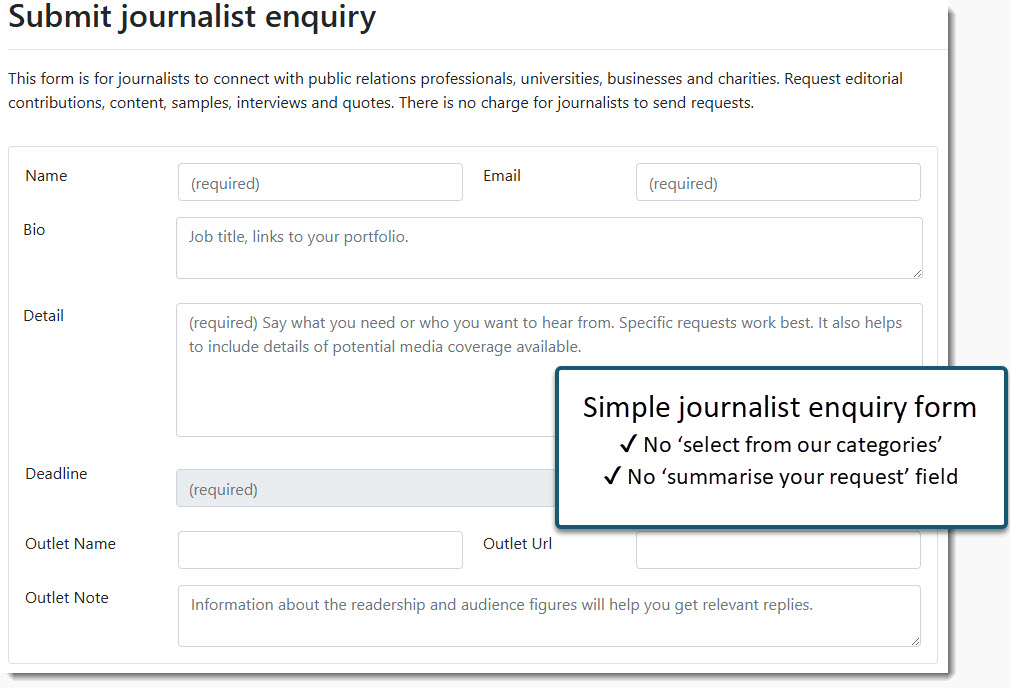
Journalist can submit their media requests – free of charge – here: dotstar.media/submit
